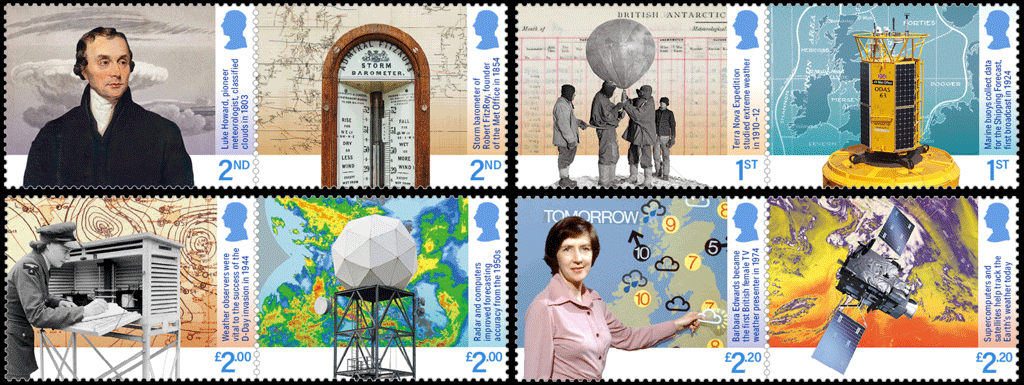[press release] [click on any of the pictures for larger versions]
New Stamps Celebrate a National Obsession:
Royal Mail Reveal Stamps Dedicated to Weather Forecasting
- Eight stamps mark the 170th anniversary of the Met Office and depict the history, science and future of Weather Forecasting
- The subjects covered include the Terra Nova Expedition to Antarctica, establishment of the iconic Shipping Forecast in 1924, and Barbara Edwards, the first British female TV weather presenter
- The stamps and a range of collectible products are available to order now at www.royalmail.com/weatherforecasting and by telephone on 03457 641641
It’s a national obsession the British are known for around the world – our fascination with 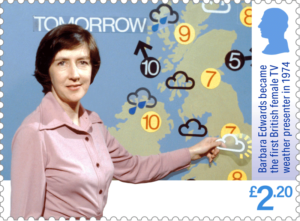 the weather – and today, Royal Mail reveal images that pay tribute to the perennial conversation starter. A set of eight Special Stamps celebrate the 170th anniversary of the Met Office and the history, science and future of Weather Forecasting.
the weather – and today, Royal Mail reveal images that pay tribute to the perennial conversation starter. A set of eight Special Stamps celebrate the 170th anniversary of the Met Office and the history, science and future of Weather Forecasting.
Featuring beautiful composite images, the stamps showcase advances in weather forecasting over the last two centuries, including the Terra Nova Expedition to Antarctica, establishment of the iconic Shipping Forecast in 1924, forecasting’s critical role in military operations such as D-Day and Barbara Edwards, the first British female TV weather presenter.
The set of stamps illustrates the following developments in forecasting:
- Luke Howard, pioneer meteorologist, who classified clouds in 1803
- Storm barometer of Robert FitzRoy, who founded what is now the Met Office, in 1854
- Terra Nova Expedition, which studied extreme weather in 1910–12
- Marine buoys, which collect data for the Shipping Forecast, which was first broadcast via morse code in 1925 and first heard on the BBC in 1925.
- Weather observers during the Second World War, who were vital to the success of the D-Day invasion in 1944, among other military operations
- Radar and computers, which improved forecasting accuracy from the 1950s onwards
- Barbara Edwards, who became the first British female TV weather presenter in 1974
- Supercomputers and satellites, which help track the Earth’s weather today
David Gold, Director of External Affairs and Policy said: “The British love to talk about the 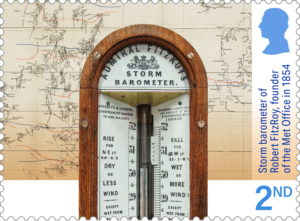 weather. It is a national obsession. Whether we are fishermen heading out to sea, farmers planning the harvest, or staycationers worried about losing our tent to the winds, people of all ages want to know whether it will be sunny or wet, hot or cold. These stamps celebrate the people and the science behind the weather forecast.”
weather. It is a national obsession. Whether we are fishermen heading out to sea, farmers planning the harvest, or staycationers worried about losing our tent to the winds, people of all ages want to know whether it will be sunny or wet, hot or cold. These stamps celebrate the people and the science behind the weather forecast.”
Professor Penny Endersby CBE, Chief Executive of the Met Office said: “The Met Office has a proud position in UK history. As an island nation we are often at the mercy of the weather and our role is to help people stay safe and thrive in every corner of the UK and 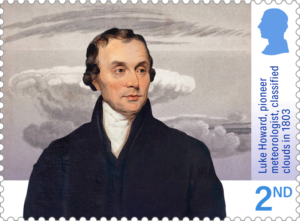 beyond. As these beautiful stamps demonstrate, the Met Office has constantly evolved from our roots at the pioneering edge of weather forecasting through to technical innovations of the modern era.”
beyond. As these beautiful stamps demonstrate, the Met Office has constantly evolved from our roots at the pioneering edge of weather forecasting through to technical innovations of the modern era.”
Claire Martin, niece of Barbara Edwards and former Canadian weather presenter, said: “I was always slightly in awe of my Aunty Barbara growing up. With her feet firmly planted in science, she proudly worked on-air, defiantly refusing to “dumb down” the weather information being delivered. She was a consummate professional and an unassuming trailblazer for women in the UK in the field of Broadcast 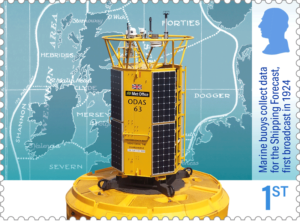 Meteorology. She paved the way for me to follow a very similar career path in Canada! It is so thrilling, so rewarding to see her honoured with a Royal Mail stamp”.
Meteorology. She paved the way for me to follow a very similar career path in Canada! It is so thrilling, so rewarding to see her honoured with a Royal Mail stamp”.
Royal Mail worked closely with the Met Office on the stamp issue and their archive is the source of many of the images used for the collection. Royal Mail also worked with writer and historian Peter Moore. Moore is the author of several non-fiction books, including the critically acclaimed Sunday Times bestseller, The Weather Experiment (2015), which tells 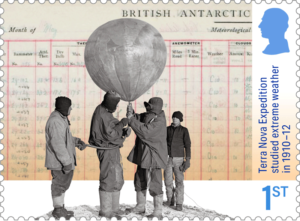 the story of how a pioneering group of thinkers – artists, scientists, adventurers and mathematicians – sought to invent a standardised way of predicting the weather.
the story of how a pioneering group of thinkers – artists, scientists, adventurers and mathematicians – sought to invent a standardised way of predicting the weather.
Weather Forecasting:
Two centuries ago, people had little understanding of weather. They gleaned clues from nature when they could, but mostly they considered the skies to be a chaotic space beyond human control. Things began to change in the early 19th century. In 1803, Luke Howard, a London pharmacist, published a booklet outlining his system for naming clouds. Soon after, Naval Officer Francis Beaufort invented a wind 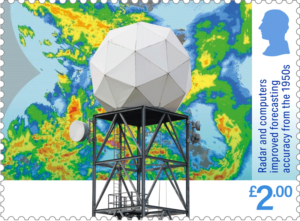 scale. Theories about storms followed, and a new department of government, which would eventually be called the Met Office, was established in 1854. The figure appointed to lead it was a Royal Navy officer and surveyor named Robert FitzRoy. Within a decade, FitzRoy was using the electric telegraph to issue storm warnings and forecasts. A new era had begun.
scale. Theories about storms followed, and a new department of government, which would eventually be called the Met Office, was established in 1854. The figure appointed to lead it was a Royal Navy officer and surveyor named Robert FitzRoy. Within a decade, FitzRoy was using the electric telegraph to issue storm warnings and forecasts. A new era had begun.
While FitzRoy’s original forecasts were soon curtailed, they returned later in the Victorian era and became a familiar part of British life. By the 20th century, weather science had 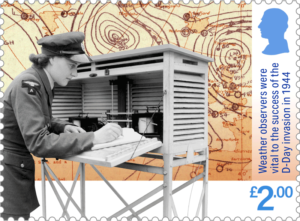 gone global, with observations playing an important part in the Terra Nova Expedition to Antarctica, and with the iconic Shipping Forecast being broadcast to mariners from 1924. During the Second World War, forecasting played a critical role, shaping plans for military operations such as D-Day. For all its importance, much of this wartime work was done with processes and charts that would have been familiar to an earlier generation of meteorologists, but once peace came, the Met Office underwent a technological revolution.
gone global, with observations playing an important part in the Terra Nova Expedition to Antarctica, and with the iconic Shipping Forecast being broadcast to mariners from 1924. During the Second World War, forecasting played a critical role, shaping plans for military operations such as D-Day. For all its importance, much of this wartime work was done with processes and charts that would have been familiar to an earlier generation of meteorologists, but once peace came, the Met Office underwent a technological revolution.
Throughout the later 20th century, weather reports were increasingly produced by powerful 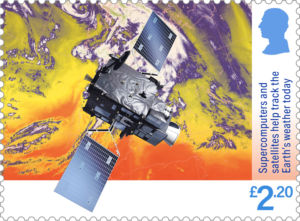 computers, which were fed global data from many sources, including radar and satellites. The forecasts were refined into television bulletins and presented by much-loved figures such as Barbara Edwards, Michael Fish and Ian McCaskill. The developments have continued into our times.
computers, which were fed global data from many sources, including radar and satellites. The forecasts were refined into television bulletins and presented by much-loved figures such as Barbara Edwards, Michael Fish and Ian McCaskill. The developments have continued into our times.
The stamps, and a range of collectible products, are available to order at www.royalmail.com/weatherforecasting and by telephone on 03457 641 641. A Presentation Pack (below) including all eight stamps in the set is priced at £13.30. The stamps go on general sale on 1 February.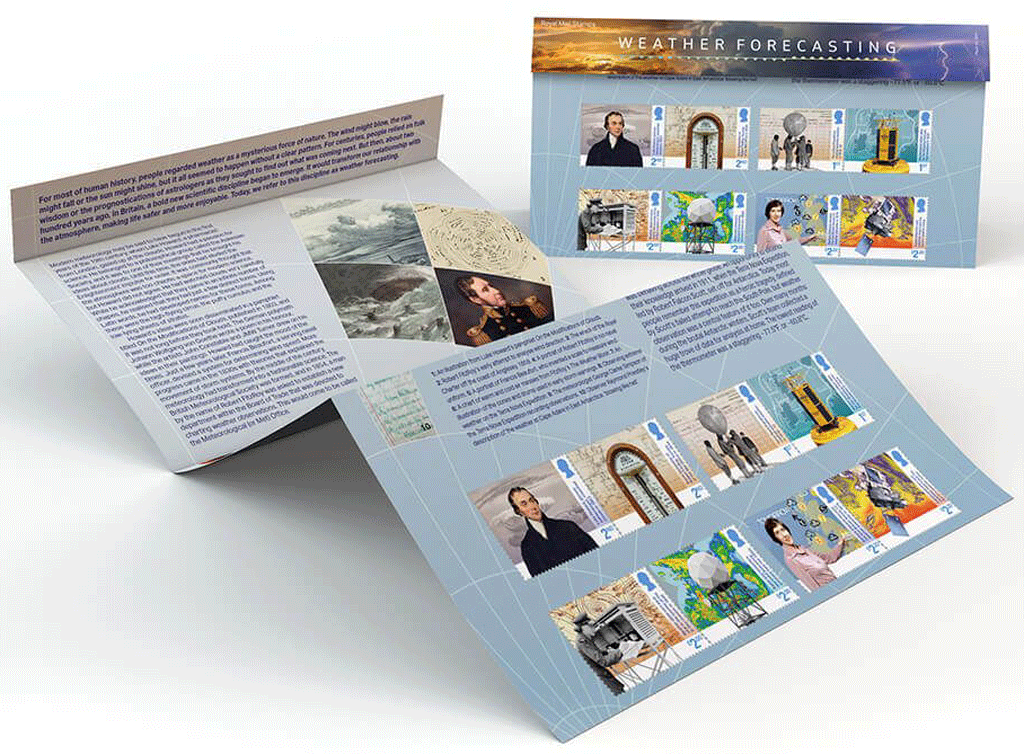 Official FDC with Exeter postmark:
Official FDC with Exeter postmark: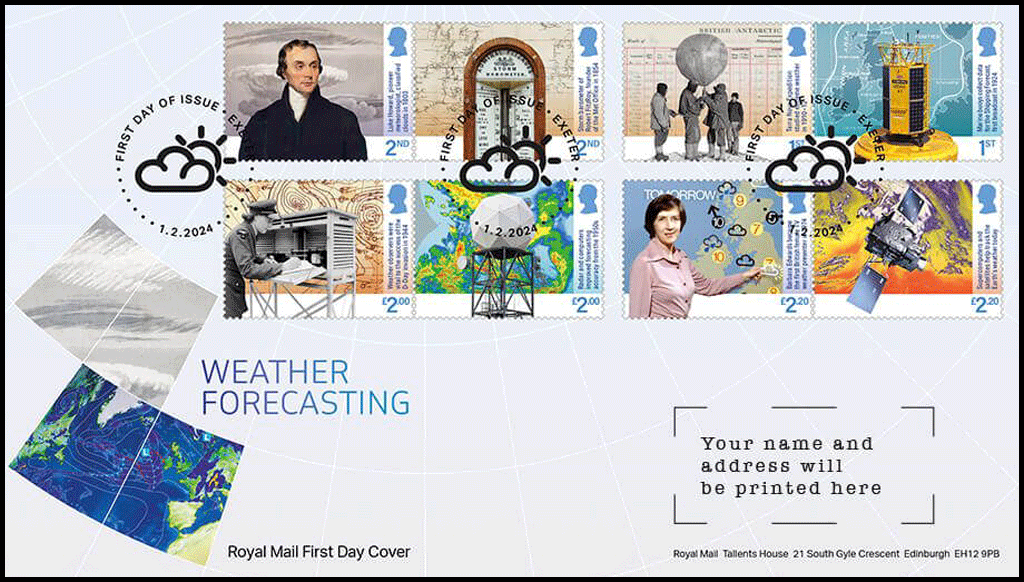 Also available with the Tallents House postmark and without the stamps, postmark or address.
Also available with the Tallents House postmark and without the stamps, postmark or address.

